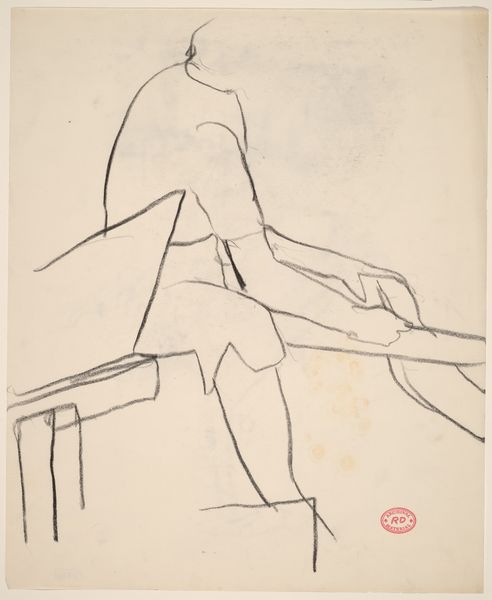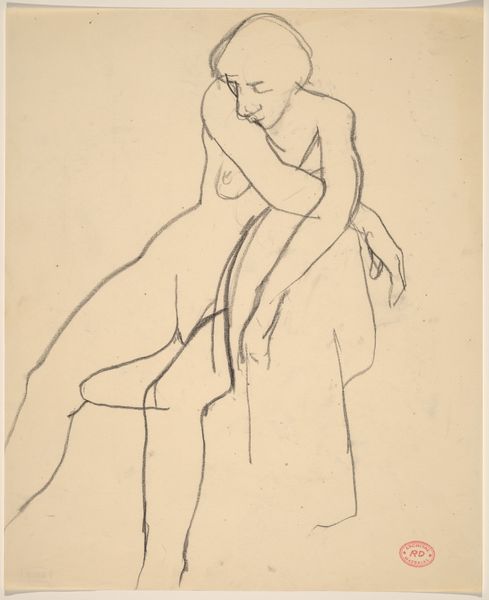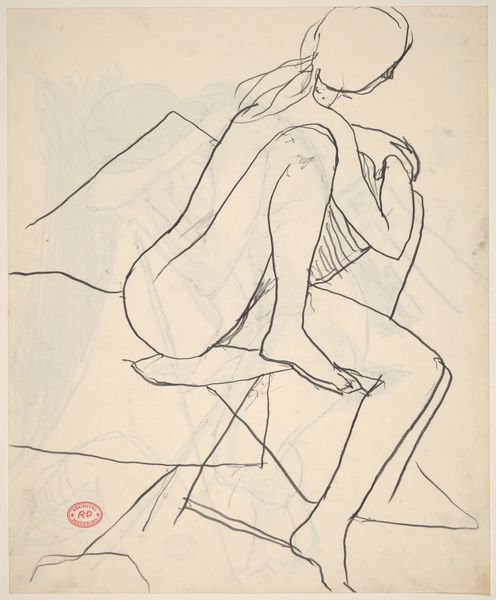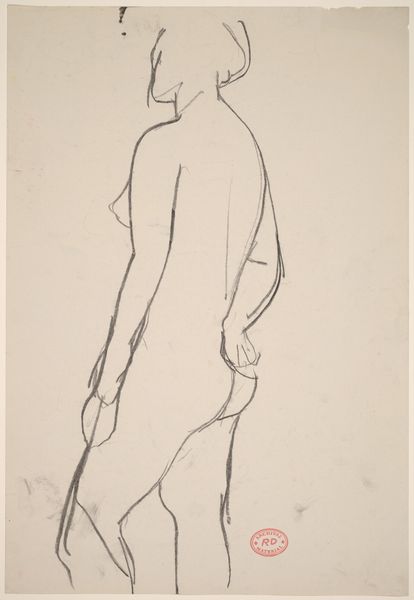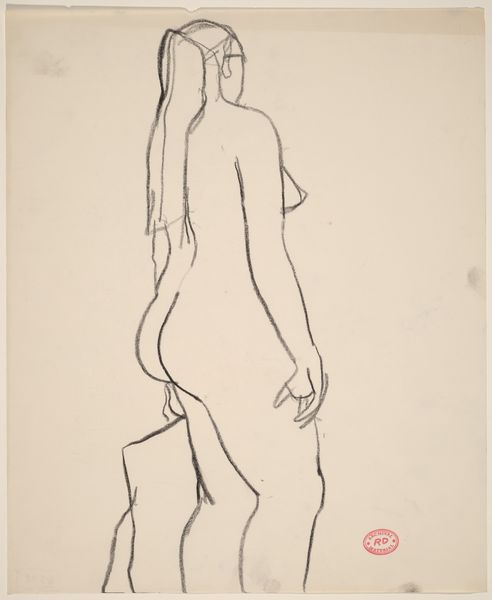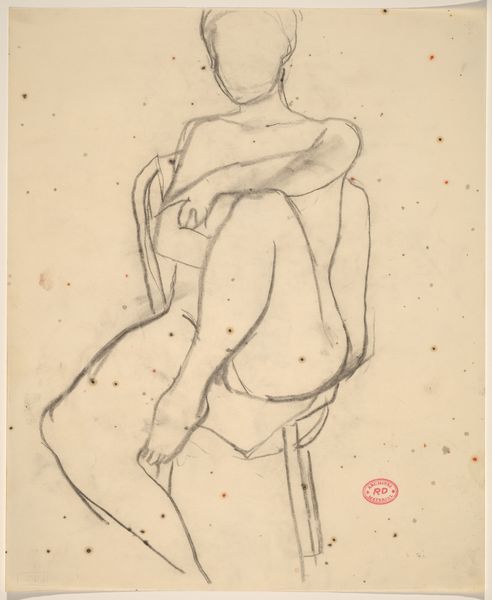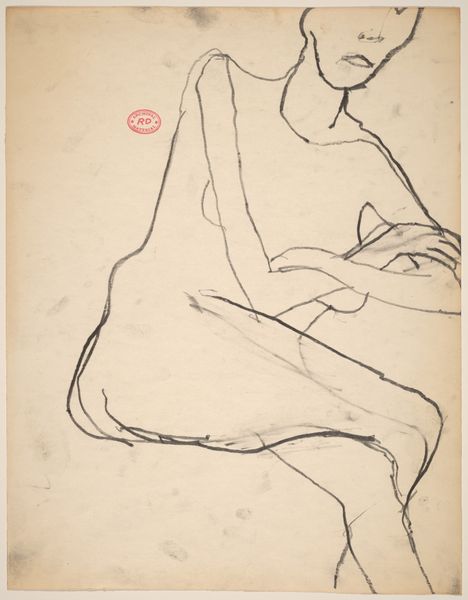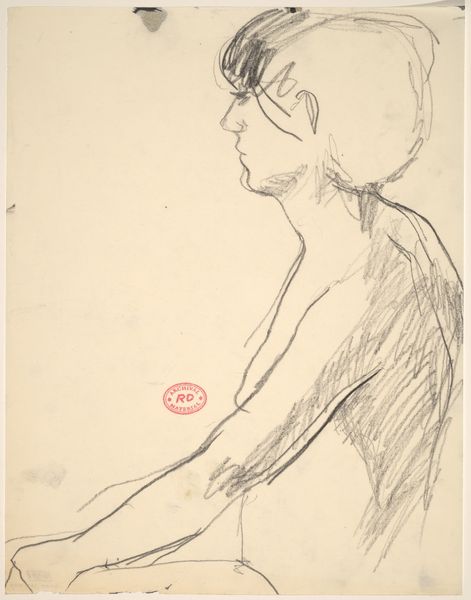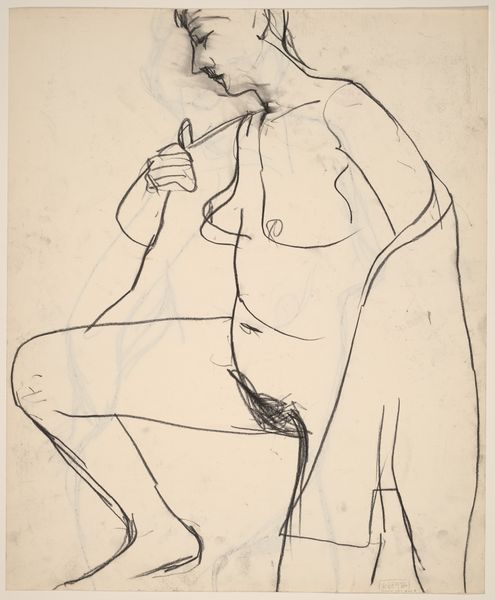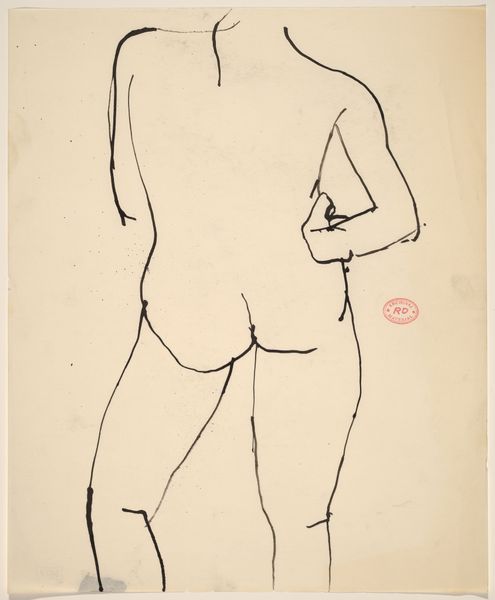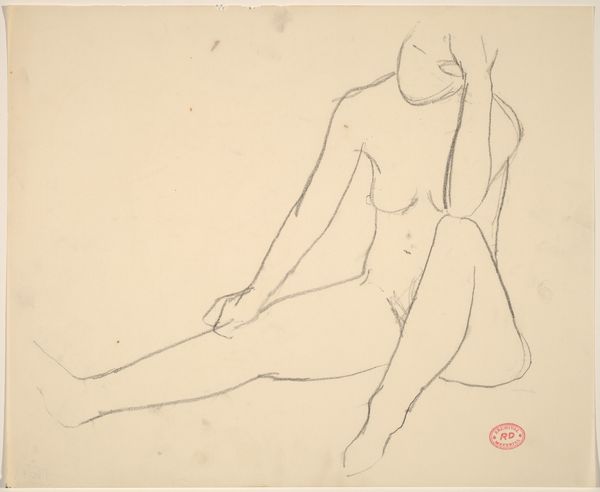![Untitled [woman] by Richard Diebenkorn](/_next/image?url=https%3A%2F%2Fd2w8kbdekdi1gv.cloudfront.net%2FeyJidWNrZXQiOiAiYXJ0ZXJhLWltYWdlcy1idWNrZXQiLCAia2V5IjogImFydHdvcmtzLzk4OTE1YTMwLTFlYmUtNDg4My1iNWFkLTc1MzdkNTdhZjBiZS85ODkxNWEzMC0xZWJlLTQ4ODMtYjVhZC03NTM3ZDU3YWYwYmVfZnVsbC5qcGciLCAiZWRpdHMiOiB7InJlc2l6ZSI6IHsid2lkdGgiOiAxOTIwLCAiaGVpZ2h0IjogMTkyMCwgImZpdCI6ICJpbnNpZGUifX19&w=3840&q=75)
drawing
#
portrait
#
drawing
#
figuration
#
bay-area-figurative-movement
#
geometric
#
modernism
Dimensions: overall: 42.9 x 35.1 cm (16 7/8 x 13 13/16 in.)
Copyright: National Gallery of Art: CC0 1.0
Editor: This is Richard Diebenkorn’s "Untitled [woman]," a drawing made sometime between 1955 and 1967. The simple lines create a surprisingly intimate and vulnerable portrait, even though the face is absent. What do you see in this piece? Curator: I see a subversion of the male gaze, frankly. Diebenkorn’s choice to render this figure without distinct facial features resists objectification. It invites us to consider the complexities of female identity beyond mere physical appearance, reflecting a burgeoning awareness of feminist issues during that time. What is present that speaks to you? Editor: I think it is how the figure’s posture feels so natural, so unposed. Curator: Exactly. Think about the 1950s and 60s and the ways women were so often portrayed in popular media–very idealized, very polished. Here, Diebenkorn seems to be offering a counter-narrative, stripping away those superficial layers and presenting a more authentic, perhaps even rebellious, vision of womanhood. How does the geometric quality play into it, for you? Editor: It gives the portrait a certain strength. Curator: It really does, which underscores that very act of refusal of the tropes of the time, which focused on softer qualities. Considering this work through a contemporary lens, we might even read it as a commentary on the ongoing struggle for women to define themselves on their own terms. Editor: I see what you mean. The artwork almost gains a political voice! Curator: Indeed. The simplicity becomes a powerful statement about representation and agency. It shows us the exciting ways Modernist ideas continue to hold relevance. Editor: This makes me look at Diebenkorn’s work with completely fresh eyes. Curator: It is a process of endless learning and unlearning. The artwork gives us the room to rethink historical perspectives.
Comments
No comments
Be the first to comment and join the conversation on the ultimate creative platform.
